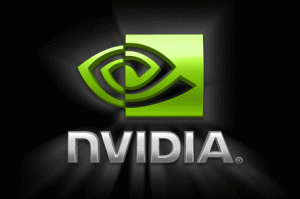New scientific applications added support for multiple GPU accelerations
Andy Ruffell / 13 years ago
While eTeknix is one of the many supporters of Distributive Computing through Folding @ Home (more here and here), Nvidia themselves have today announced the addition of four new applications with support for multiple GPU acceleration, thus enabling to cut simulations time from days to hours.
Those four leading applications for material-science and biomolecular modeling are GAMESS, GROMACS, LAMMPS and QMCPACK, and thanks to their addition to the multiple GPU acceleration support, they should help scientist in studying larger molecular model for longer time periods with greater accuracy, leading to increased knowledge of the potential impact of drugs and the effectiveness of new materials. Drug developers could also benefit from shorter discovery times and lower development costs.
Joining a growing list of application, these same application allow university, government and industry researchers to advance researchers by leveraging the power of GPUs.
The fours applications mentioned above are used to advance modeling in various key areas:
- GAMESS is a quantum chemistry application important in the design of new drugs and materials. It uses computational methods to solve the electronic structure and properties of molecules.
- GROMACS enables the simulation of biomolecular interactions between proteins and drug candidates. It can be used to study protein folding and mis-folding, which is relevant in understanding such diseases as Alzheimer’s, Huntington’s disease and some forms of cancer.
- LAMMPS is utilized to model, at the atomic scale, soft (biomolecules, polymers) or solid-state (metals, semiconductors) materials.
- QMCPACK simulates the properties of materials, achieving high accuracy and excellent scalability using a continuum quantum Monte Carlo method.
For the biomolecular and material-science researchers interested in a free trial of these new GPU-accelerated applications, they can now register for the Nvidia Tesla MD SimCluster program. This off-the-shelf integrated cluster solution is fully optimized to simulate large-size models and achieve higher accuracy, while significantly reducing simulation time.
Quotes
“We like to push the envelope as far as we can toward highly scalable efficient code. GPU technology is the most promising way to achieve this goal. Given our association with a DOE laboratory, energy efficiency is equally important, which is another benefit of accelerating quantum chemistry using GPUs.”
— Mark Gordon, distinguished professor at Iowa State University’s Chemistry Department, director of the Applied Mathematical Sciences Program at AMES Laboratory, project lead for GAMESS“GROMACS 4.6 supported by GPUs is expected to accelerate simulation performance 2-3 times faster than previously possible. The greater simulation speed enables research scientists to have deeper insights into the biological behavior of drug candidate and protein receptors involved in diseases.”
— Erik Lindahl, professor of Theoretical & Computational Biophysics, KTH Royal Institute, and technology professor of Computational Structural Biology, at Stockholm University’s AlbaNova University Center“For major workloads using QMCPACK, we’re seeing a 3x node-to-node speedup for single-GPU nodes over dual-socket CPU nodes. We’re also seeing excellent scaling of this performance for hundreds of GPUs. This allows us to investigate material properties at an unprecedented scale and level of accuracy.”
— Jeongnim Kim, R&D scientist at Oak Ridge National Laboratory.“Molecular dynamics practitioners are handicapped by well-known timescale limitations: they can’t simulate long enough to model many phenomena of interest,” said one of the original LAMMPS developers. “Simulation timescales can be extended dramatically by use of large-scale clusters of GPUs.”
— Steve Plimpton, distinguished member of technical staff at Sandia National Laboratories“The Availability of many computationally efficient GPU nodes locally has allowed us to approach drug design in a new way, giving fresh insights into disease mechanisms. With GPUs, we’ve been able to run many more simulations with fewer assumptions, creating more realistic models.”
— Dr. Michael Kuiper, computational scientist at Victorian Partnership for Advanced Computing
For more information about Nvidia’s Tesla GPUs visit here. For more information about Nvidia’s CUDA architecture visit here.
Source: Press Release




















